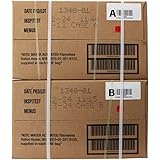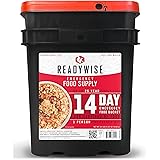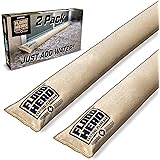Understand Weather Patterns
Research Local Weather Trends
One of the first things I did when I moved to a new area was get familiar with its weather patterns. Every region has its quirks, whether it’s unexpected storms or unseasonably warm temperatures. Taking the time to look up historical weather data can truly be a game-changer. It’s like trying to understand the personality of someone new; it takes time, but it definitely pays off.
Websites and apps like Weather.com or AccuWeather can provide forecasts as well as historical data. I personally enjoy digging into these resources to find out about the seasonal behaviors of my local climate. It gives me the upper hand in preparing for sudden weather changes by keeping me informed on what to expect.
Make it a habit to check the weather forecast daily. I’ve found that dedicating a few minutes in the morning can really set the tone for my day. Knowing that a storm is brewing will keep me alert to possible changes, which leads me to always be ready.
Monitor Weather Alerts
Living in an age where technology is at our fingertips means that I can get real-time updates on the weather. I’ve got my phone set up to receive alerts from the National Weather Service—this has saved me more than once. They give you heads up on severe weather conditions and can even alert you to change your plans. Trust me, they’re usually spot on!
In my experience, having a weather radio is also super helpful. These radios can give you continuous updates and emergency information. I keep mine in the kitchen, so it’s always accessible, and I love how it doesn’t rely on the internet or phone service! You can also invest in apps that send notifications straight to your phone, which can serve as a nice backup.
When I receive a weather alert, I don’t just shrug it off. I act on it—changing plans, securing outdoor items, and staying inside if necessary. The quicker you respond, the safer you’ll be.
Learn About Local Climate Challenges
Every area comes with its own set of weather challenges. For instance, I’ve learned that living near the mountains can mean sudden downpours or unpredictable snowfall. Understanding the common challenges in your area not only helps you prepare but can also keep you out of trouble. For example, I’ve seen people get stuck on the road during flash floods, whereas those in-the-know stayed safe at home.
Apart from this, network with locals—many have stories or advice that can guide you. You could also join local online groups or forums to share tips and experiences. It’s fantastic to gain wisdom from those who have weathered (pun intended!) these storms before!
== > What if ... Get a FREE Subscription to PREPARE
Adaptability is key. The more you learn about local climate challenges, the easier it is to prepare for sudden changes. So get out there and become a weather whiz!
Prepare an Emergency Kit
Essential Supplies to Include
Creating an emergency kit is one of those things that sounds daunting, but it’s genuinely straightforward. I started out with the basics: water, non-perishable food, first-aid supplies, and a flashlight. It’s amazing how easy it is to forget these essentials until you need them!
As I assembled my kit, I also included a few personal items. Don’t underestimate the comfort of having things like your favorite snacks, a book, or a photo of loved ones! In stressful situations, having those little bits of normalcy can make all the difference.
Check your emergency kit regularly. I make it a point to go through mine every six months to replace expired items and update supplies as needed. It’s a great reminder to keep everything in tip-top shape!
Location and Storage Tips
Now that I’ve gathered my supplies, it hit me: where do I put this emergency kit? Ideally, it should be somewhere accessible, like the entrance of your home or in the vehicle. I personally keep mine in the garage, where it’s protected but also reachable in a hurry.
Also, consider the layout of your home. For example, I’ve placed the kit in the garage because it’s just a short run to the door. Think through your own space—what makes the most sense for you? Everyone’s setup is different, and that’s okay! Just be sure you can get to it quickly when needed.
Another gadget I found useful is a waterproof container! It’s perfect for those unpredictable weather issues where water damage is a concern. It keeps everything dry and ready for any emergency—worth every penny in my opinion!
Regular Maintenance and Updates
Okay, so you’ve made your emergency kit, but the work doesn’t stop there! Ongoing maintenance is crucial. I set reminders in my phone to check on the kit periodically. It helps keep me accountable—sorta like a friendly nudge from a buddy.
Each time I check it, I think of what’s new that I might need. I often rotate items aging or expired, ensuring I have what I need when it counts. Plus, it’s a good time to restock any supplies that have been used up since the last go-round.
Remember, it’s not enough to just have the kit; you must know how to use the items within it. I take time to familiarize myself with tools like emergency blankets or whistles. It just provides that extra layer of confidence when the weather takes an unexpected turn.
Stay Connected with Others
Join Community Groups
I can’t stress enough the importance of staying connected with others regarding weather preparedness. Joining community groups has helped me gather resources and share advice. Plus, when things go sideways, having a support network is invaluable.
Many neighborhoods have Facebook groups or apps like Nextdoor. I found it a great way to learn about local resources, get tips from fellow residents, or even find out who’s organizing emergency prep courses. This collaborative spirit can really pull a community together during tough weather!
Being part of a community also keeps me motivated! Seeing how others prepare inspires me to stay on my game. Don’t underestimate the power of sharing experiences and strategies—it can really help smooth out the bumps when moments get tough.
Get Preparedness and Self-Reliance Tips. Subscribe Now!
Emergency Contacts
Part of my communication strategy includes having an updated list of emergency contacts. I’ve printed mine and placed it in my emergency kit, which isn’t a bad idea at all! Sometimes phones go down, so it’s good to have a hard copy to hand over.
Alongside family and friends, I also have contacts for local emergency services written down. Knowing who to reach out to in case of severe weather gives me peace of mind. In my frantic moments, I find it so comforting to have everything thought out and organized.
Sharing this list with family members is also essential. We’ve set up a family group chat which ensures everyone is on the same page when things go awry. This way, we avoid panic, and we can act decisively instead of ravenously trying to track everyone down.
Communication During Emergencies
Lastly, devising a communication plan has proven hugely beneficial. In emergencies, it’s essential to find ways to stay in touch, especially if you or loved ones are apart. Something I like to do is plan a few rendezvous points, should cell service go down—like a local park or even a neighbor’s house. It’s a nice fallback plan!
If I haven’t mentioned it earlier, face-to-face chats are golden. After a storm, meeting up with neighbors to share resources and experiences is a great way to pool knowledge and care for each other. It’s truly uplifting when communities come together.
I’ve also ensured my family understands how to use various communication tools, whether it’s via text, social media, or old-school methods like landlines. I want to ensure we remain connected during times of stress!
Practice Drills and Emergency Plans
Establish a Family Emergency Plan
It can be easy to forget about emergencies until they hit. So, I sat down with my family to establish a comprehensive emergency plan that everyone can understand. We walked through potential scenarios, from how we’d respond to a tornado warning to an unexpected hurricane. Addressing these situations head-on gave us the confidence we needed.
It’s especially important to encourage input from everyone. The last thing I want is for family members to feel left out or not heard. We brainstormed ideas together, which boosted everyone’s confidence and established trust in our plan.
Having a clearly outlined plan allows for smoother execution when the time comes. Not only do we have designated roles, but we also support one another, which strengthens our family bond during chaos.
Run Regular Drills
Running drills may sound excessive, but trust me, it’s super beneficial! Once we solidified our emergency plan, we started performing drills every few months. This practice helps familiarize us with procedures we need to follow at a moment’s notice.
During these drills, we follow our established plan but also incorporate any unexpected twists. For instance, what if the power goes out during a tornado drill? Trust me; it makes for some lively practice and opens up conversations about what-ifs.
These drills have provided a sense of confidence I didn’t realize I was missing. And when the time comes—and let’s face it, it often does—that awareness leads to such a smoother response!
Stay Updated on Emergency Protocols
As the weather changes, so too do emergency protocols. I stay in the know about local emergency procedures by checking in with local authorities and subscribing to alerts. Familiarizing myself with what’s expected during extreme weather helps prepare me mentally, so it’s a no-brainer!
I’ve learned that plans may evolve as communities improve their response strategies, so keeping current on these protocols will ensure I’m always up-to-date. It’s such a relief when I can take action effectively without second-guessing myself.
Not only does staying updated give me confidence, but it also keeps my family safe! It’s a win-win if you ask me. So regularly check in and stay proactive in your community’s plans.
FAQ
What should I include in my emergency kit?
Your emergency kit should contain essentials such as water, non-perishable food, a flashlight, first-aid supplies, and any personal items to ensure comfort.
How often should I check my emergency kit?
I recommend checking your emergency kit about every six months to replenish items and update supplies as needed.
What is the best way to stay informed about weather changes?
Monitoring local weather apps, subscribing to alerts, and joining community groups can keep you in the loop with the latest weather updates.
Why is it important to have an emergency plan for my family?
An emergency plan prepares everyone for various situations, ensuring that actions can be taken quickly and efficiently to keep everyone safe.
How do practice drills help prepare for sudden weather changes?
Practice drills familiarize you and your family with emergency procedures and build confidence in your response during an actual emergency scenario.
Get Preparedness and Self-Reliance Tips. Subscribe Now!
Related Content
Wornick Sopacko, Ameriqual MRE Meals Ready to Eat Inspection 2025, 2026 or Better, Emergency Food Supply, Survival Camping Outdoor 12 Pack(A & B Case Bundle, 2, Count)
Now retrieving the price.
(as of December 25, 2025 18:19 GMT -05:00 - More infoProduct prices and availability are accurate as of the date/time indicated and are subject to change. Any price and availability information displayed on [relevant Amazon Site(s), as applicable] at the time of purchase will apply to the purchase of this product.)





